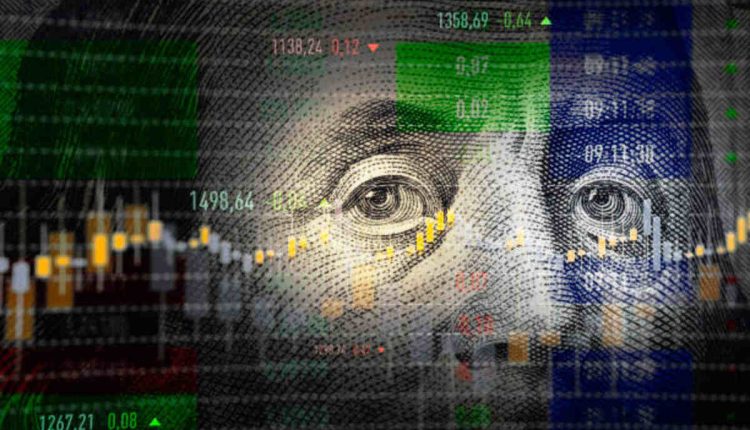Forex trading involves speculation on the relative valuations of different currencies, typically quoted in pairs such as EUR/USD. Forex traders profit by simultaneously purchasing one currency while simultaneously selling another one for an initial profit gain. Read the Best info about forex robot.
The Foreign Exchange Market is vast with a daily trade volume of more than $6.6 trillion! In this article, we will cover its fundamentals.
Currency Pairs
Currency pairs traded on the foreign exchange market include two different currencies – one is considered the base or base currency while the other serves as quote or counter currency. Their prices depend on global factors such as fluctuations in overnight interest rates set by central banks as well as economic data.
There are three main categories of currency pairs, known majors, minors, and exotics. Major pairs such as EUR/USD, GBP/USD, USD/JPY, USD/CHF, and USD/CAD make up most trading in the foreign exchange market and are known as majors due to their high trading volumes and tight bid-ask spreads.
Other currency pairs tend to be less liquid, with wider bid-ask spreads and greater risks to traders. USD/KRW pits the US dollar against South Korean won, which is popular among Asian traders. “Exotic” pairs that don’t involve USD include euro and Swiss franc (EUR/CHF), pound sterling/Australian dollar (GBP/AUD), and Canadian dollar/Japanese yen (CAD/JPY), all of which tend to be more volatile and affected by commodity price changes.
When trading currency pairs, an asking price refers to what a broker (seller) will accept to purchase one unit of a base currency from traders (buyers). Meanwhile, bid prices refer to what traders must pay to secure this purchase.
Spot Transactions
Spot trades are the easiest and quickest form of foreign exchange transaction. They involve buying or selling currencies instantly at their spot price – which updates in real-time – for immediate delivery at their prevailing market rates.
Spot markets are widely associated with currency trading, though the concept can also apply to commodities and equities. Foreign exchange transactions usually take place on the spot market – the world’s biggest. Its primary trading instrument is the forex market which operates 24 hours a day globally.
Companies can also utilize forward contracts to hedge currency risk and make payments more predictable. A forward contract is an agreement to buy one currency at an agreed-upon future date in exchange for another with higher or lower exchange rates than their spot prices; most forward contracts can last for one to twelve business days (T+2).
Spot Market Prices Are Determined Through Multiple Buyer and Seller Bids/Offers at Regulated Exchanges Around the World The prices set on the spot market are transparent to traders who execute trades at those current prices; hence the risks involved with spot trading are much reduced when compared with other forms of foreign exchange trading.
Forward Transactions
Forward transactions are agreements between two parties to buy or sell an asset at a specified price and date in the future, either as Forward Currency Transactions or Forward Interest rate Transactions. This type of trading, commonly referred to as Hedging, helps reduce risk during times when prices fluctuate significantly – it’s also called Hedging!
Example: Say, for instance, you intend to purchase EUR100,000. At present the exchange rate between US$ and EUR is 1.13; using a forward contract can help lock in this rate now so there will be no risk that the rate may change when making your purchase.
Forward contracts are commonly utilized by companies looking to protect against possible exchange rate fluctuations when making international purchases or by investors betting that an asset will increase in value over time. Their key feature, as with all derivative instruments, is the requirement that purchases or sales must occur at an agreed future date – hence being known as forward contracts.
Forward contracts do not trade on an exchange and must be privately negotiated between buyer and seller, making them less standardized than futures contracts while offering more customization options.
Futures Transactions
Futures transactions obligate buyers and sellers to exchange an asset on a specific future date regardless of its market price at that moment. Assets traded can range from physical commodities, financial instruments, stock market indexes, interest rates, and cryptocurrencies.
Forwards trade over the counter with terms and contract specifications customized by both parties involved, while futures contracts are standardized exchange-traded instruments that outline quantity and price agreements of an underlying asset. They’re frequently supported by clearinghouses which provide financial guarantees on trades occurring on respective exchanges.
Futures traders can be divided into two distinct groups: hedgers and speculators. Hedgers use futures trading to manage price fluctuations by purchasing or selling an asset; on the other hand, speculators attempt to profit by forecasting those prices accurately.
Futures markets have evolved since their earliest beginnings with agricultural commodities to include all manner of stocks, natural resources, and currencies. Their purpose has remained the same: meeting traders’ needs by providing a central forum where buyers and sellers could meet, at first physically and then electronically. Today the futures exchanges remain essential in ensuring trades will take place as promised while also serving farmers, miners, and manufacturers by protecting against daily fluctuations in the price of their commodity of interest.


